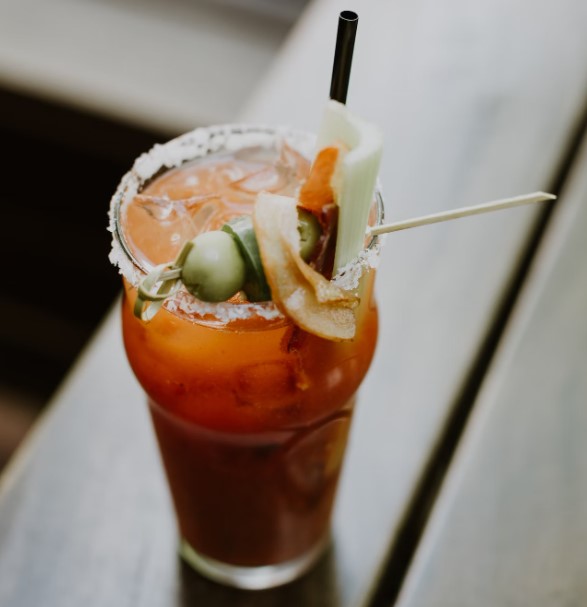
Born in the great city of New Orleans, the Bloody Bull is the beefier cousin of the Bloody Mary. Treated to some meaty broth, the drink is super savory and begging to accompany your brunch plans.
The original hails from Brennan’s, a colorful creole restaurant that’s been on the scene since 1946. There are riffs of course, with bartenders treating the drink to everything from a bit of Guinness to a host of different spice blends.
What we do know is that the original recipe is a great template to begin with — the makings of a hearty drink that functions like a wintry meal in a glass. Owen Brennan is believed to have conjured up the drink in the 50s, looking for a more interesting version of the Bloody Mary. He opted to go the route of house made bone broth and the drink was born. Today, it has a major following, both among NOLA locals and tourists looking for a taste of the city.
The Bloody Bull may be enjoying its greatest acclaim yet, enjoyed amid a backdrop of bone broth love that’s sweeping the nation. The health benefits of the stuff are real, and bartenders and cooks are responding accordingly, utilizing the meaty liquid. And this rich and salty goodness is all the better during the chilly days of winter, as in, right now.
A few tips: Play around with the seasonings, whether it be infused salts or smoked versions. Consider adding a bit of citrus of the tomato juice doesn’t provide enough punch and, if at all possible, make your own stock. That’s what Brennan does and in short, it’s tough to beat the real deal. Beef bones are the source of the storied cocktail but by all means, mess around with different kinds or even some heavier vegetable broths. Lots of complementary ingredients can be added to the Bloody Mary, from clamato juice (in the vain of a Bloody Caesar) to fish sauce or tamarind.
Additionally, while the vodka is mainly just adding a boozy kick here, you can elevate things with a higher-end option or even a flavored option. We’re big fans of this horseradish vodka, tailor-made for a Bloody Bull. Alternatively, go with an NA version. With so many ingredients producing so much flavor, you don’t even need the hooch.
So get out the waffle maker, start the bacon, and make yourself a Bloody Bull.
Bloody Bull
Here’s the classic incarnation from Brennan’s. Try it out and then tinker around with some of your favorite condiments. And don’t forget to be liberal with your salty garnishes.
Ingredients:
- 2 ounces vodka
- 2 ounces tomato juice
- 1 ounce beef bone broth
- 1/4 ounce Crystal Hot Sauce
- 1/4 tablespoon horseradish
- 3 dashes Worcestershire sauce
- 1 pinch of celery salt and black pepper
- Creole seasoning , olive and okra to garnish
Method:
- Built in a seasoning-rimmed glass and stir.
- Garnish with olive and okra.
Ready for more savory drinks? Here’s how to make a classic Bloody Mary and a few Scotch breakfast cocktail recipes. Don’t forget to check out our feature on the best vodkas in 2024.



